This year’s Lancaster Insurance Classic Motor Show was held at the National Exhibition Centre in Birmingham, U.K., from November 14-16. It is fast becoming one of the UK’s best classic car venues; VeloceToday has reported on it for three years running now.
The event always draws unusual entries; this year one of the three Zimps appeared, an example of the art of Ercole Spada who also designed the Alfa GTZ. Another surprise was a Lancia Dilamdba – one of the rarest Lancias – and this one owned by a Maharajah. The Maserati exhibit was almost overwhelming, but the Editor’s favorite was the 160cc Maserati motorcycle. Ed McDonough (read his article on driving the Lancia D50 this week) said in a comment to Roy Smith’s article last week about the Alpine A220, “It was the most interesting car in the show.” Yes I would agree but there where a few more gems, though some where tucked away on small stands in the less brightly lit halls which took some finding. Digging up the treasures is however half of the fun. I also found it a good idea to read some of the display boards fully before dismissing the car out of hand, The Jensen Interceptor being a case in point. What follows is a selection of other gems that tickled my fancy so to speak.
Photos and captions by Jonathan Sharp
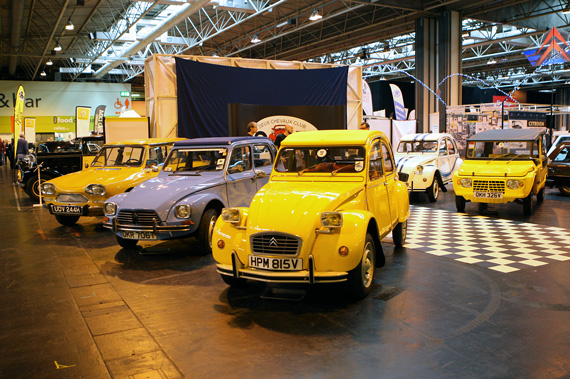
The Deux Chevaux club display contained a good cross section of what we affectionately call tin snails. Citroen Ami, Dyane, 2cv6 and a Mehari.
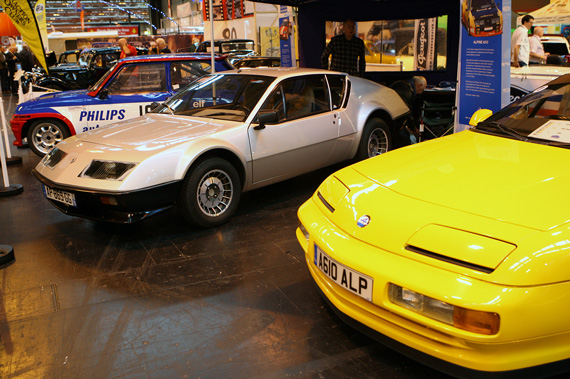
In addition to the A220 that Roy expertly covered last week club Alpine Renault displayed a rather nice pair of Alpine road cars, an A310 and a later A610 together with a Turbo two Renault 5 rally car.
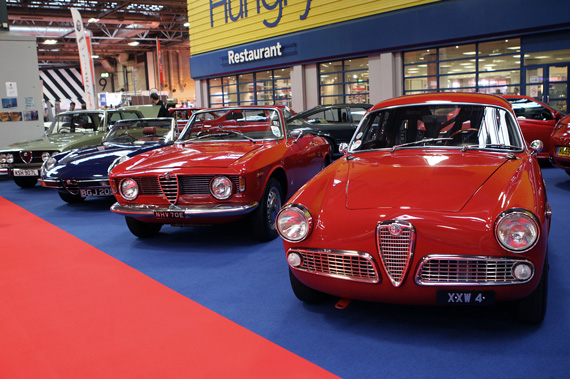
The Alfa Romeo Club of Great Britain can always be relied upon to put on a good and varied display of cars. At the front of the display a lovely 750 series Giulietta Sprint a GTC, 2000 Spyder and a 1750 Berlina.

This is very rare, a 1964 Hillman Zimp. One of only three built. Mike Hanna who owns this example also owns another one. One of Ercole Spada's designs for a small compact car, the Zimp had the beltline continue all around the car. 'I didn't want to interrupt that line, so I invented electrically operated eyebrows which arose when the headlights were switched on,' recalled Spada.
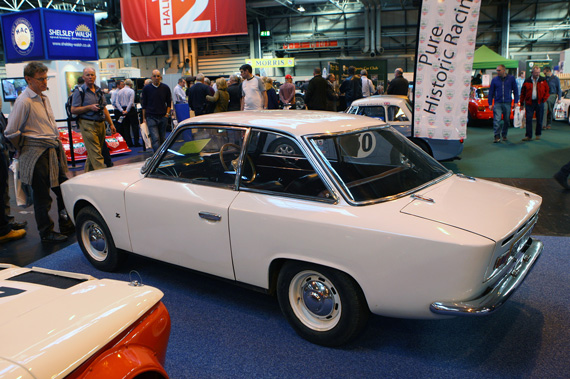
Mike was telling me that he rescued his other example from an old man who was a hoarder whose house was full of junk and the Zimp was outside in the open and without a cover on it. After many years Mike was able to rescue it. The Zimp project was killed by Chrysler after their purchase of the Roots Group.
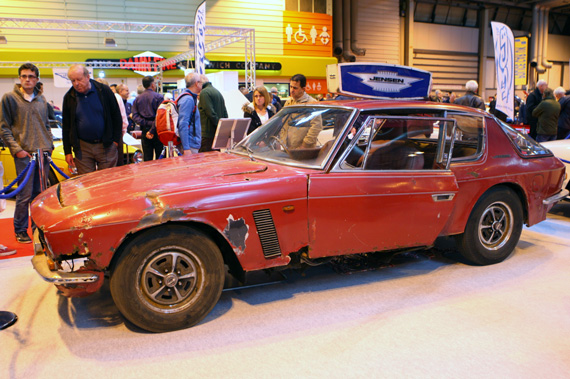
Why did I send a photograph of a completely rotten old Jensen Interceptor? Ah but wait. The first 50 Interceptors were built in Italy by Vignale and this example is one of them. This is chassis 115/2517 which was completed in November 1966 and is believed to be the 15th example built. In fact only 16 examples were constructed in that year. This example was supplied new to Newbury Motors and may well have been used as a demonstrator as the car has leather seat facings rather than the normal vinyl of the first Vignale built examples. The car is owned by an English man living in Italy and is about to undergo a full but sympathetic restoration under the care of UK Jensen specialists Rejen. Unlike the later West Bromwich built examples which used pressed steel panels the Vignale cars were all hand made which is certainly going to prove a challenge for Rejen. Info taken from placard near car and from conversations with the team.
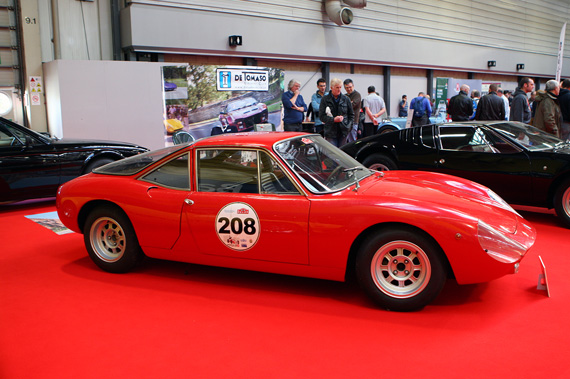
To see a De Tomas Vallelunga at a British show is very rare. This example is however the rarest of the rare. It is alloy bodied rather than fiberglass. Fissori built 6 examples in alloy, 3 prototypes and three preproduction models. Fissori ordered that the three prototypes be destroyed as he was unhappy that Alejandro de Tomaso had instructed Ghia rather than Fissori build the production examples (about 50 built). Alejandro did own Ghia at the time. However the remaining three pre-production models were already in the hands of Alejandro so these were shown at various motor shows during the production life of the model.
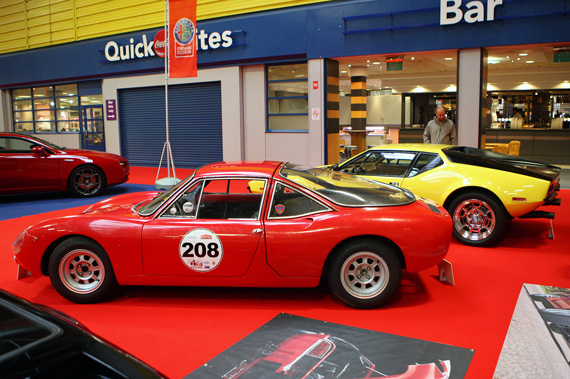
It is not known however, in which shows this Vallelunga appeared. On the Monday after the show the car was going to be taken to Roger Brotton's company Three point four to under go a full restoration which will include returning the car to its original pistachio green colour.
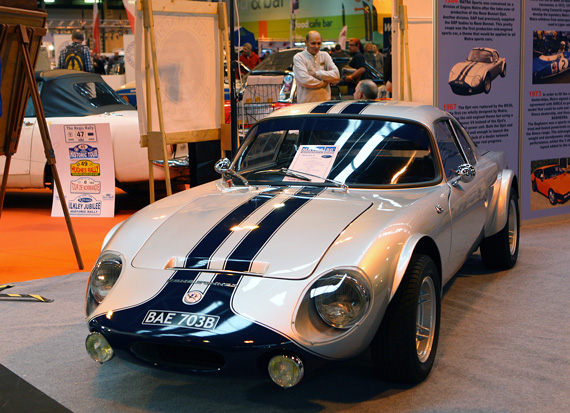
Introduced in 1962 the Rene Bonnet's DJet piped the De Tomas Vallelunga to the title of the world's first mid-engined road car. It was a lot more successful too, with 1493 being produced before production stopped in 1968.
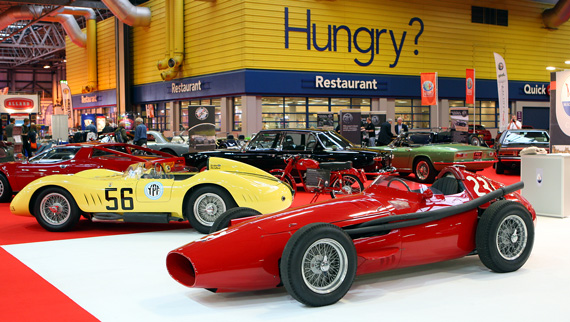
Maserati 250F Taking center stage on the Maserati club stand was Nick Mason's 250F chassis 2532. According to Nick's book 'Into the Red' this is believed to be the last of a trio of V12 examples built in 1957 which was subsequently modified to expect the six cylinder engine to race in the National Brazilian Formula Libre series. Nick states that on the shipping bill for its export to South America it was listed as a ladder! the car next to it is the 200 Si of Gordon McCulloch, chassis 2408 with Fantuzzi bodywork which you may recall has been featured at speed in VeloceToday.
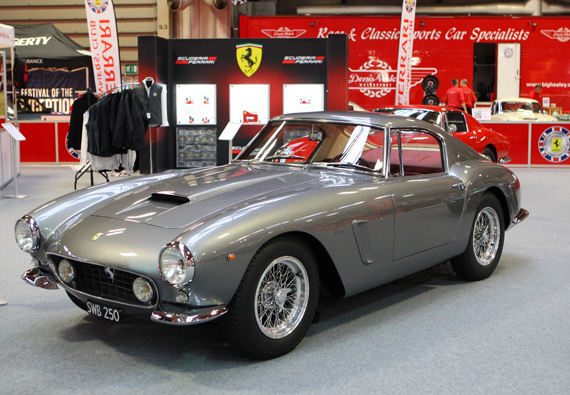
What more can you say about a Ferrari 250SWB that has not been said before, just beautiful. No chassis number displayed.
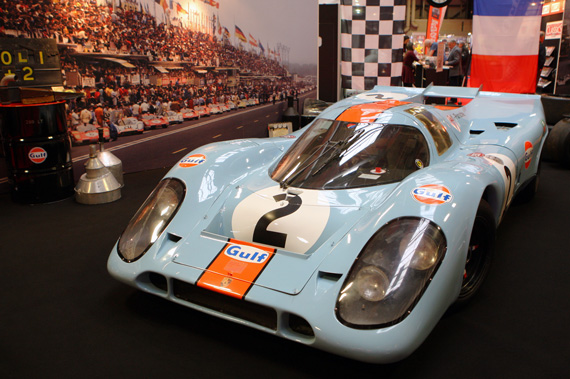
Porsche 917. One of the themes of the show was 'The big screen' which featured various Hollywood mechanical stars. Here is one of the most famous racing cars (after Herbie of course) a Porsche 917 one of the stars of Steve McQueen's Le Mans.

In addition to the standard B10 saloon Lancia also built a platform chassis Aurelia to be used by individual coachbuilders which was known as the B50. Construction of this example began on the 17th March 1951 with the chassis being sent to Pinin Farina on the 28th July 1951. First registered in Beltrani Di Omega Italy on the 15th May 1953 to Signor Attilio Edoardo it was later registered in Milan and then via several dealers the car was registered in Rome to Signor Giovanni De Filippo Cagiati on the 10th December 1955. He kept the car till 1962 when it was purchased by an American Professor of economics Richard Murphy who taught at Cambridge and Siena. Ade Rudler purchased the car and after completing the restoration which had been started in the 1990s put the car back on the road in 2010. (from the placard).
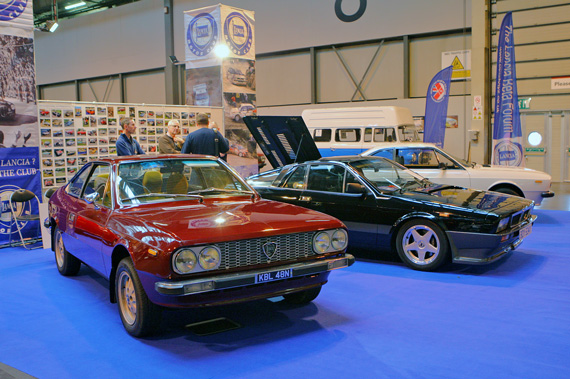
Lancia Betas. A nice line up from the Beta Boys from the Lancia Beta Forum. No HPE though this year.
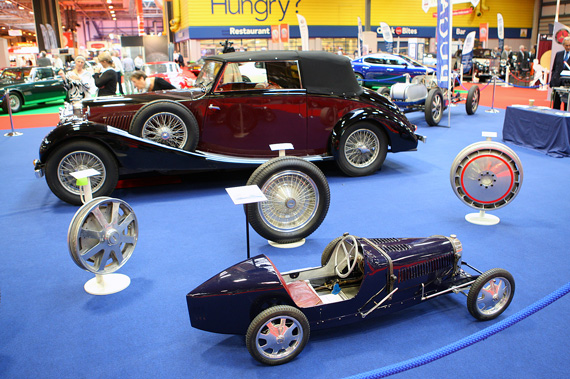
Bugatti Wheels. Taking pride of place at the center of the Bugatti owner's stand car was chassis 57391, a Type 57 with coachwork by James Young.
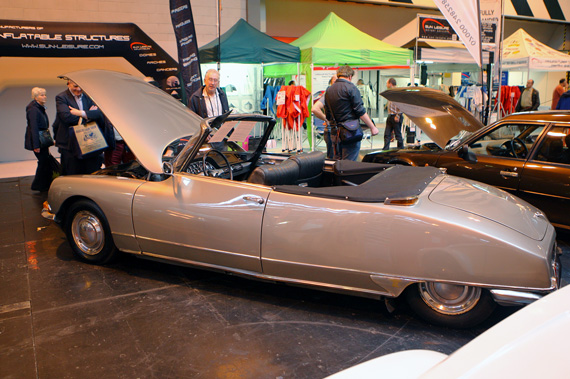
Citroen DS23 Between 1960 and 1971 Henri Chapron built 1365 examples of the Decapotable. Each hand built the last example was not delivered until 1978.
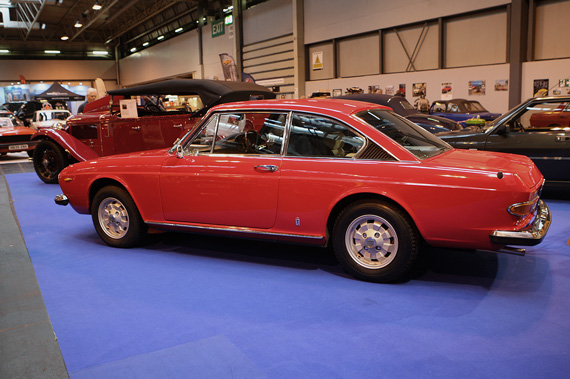
Lancia Flavia. Oh so elegant. This 2000HF Coupe has been in the ownership of Derek Creasey for the past 30 years.
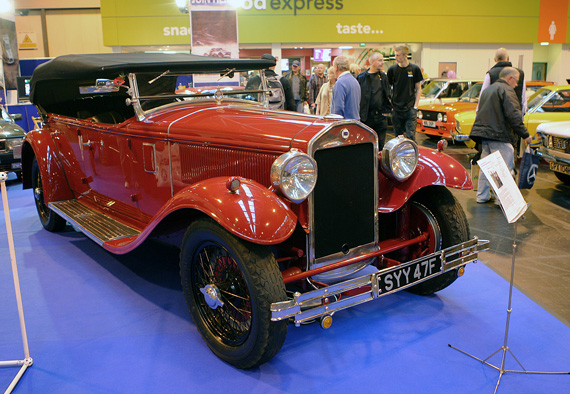
Lancia DiLambda. This model 1929 model 227 series 1 Dilambda was order by HH The Maharajah of Mysore Raja Krishna Wadiyar IV with a custom built body by Vittorio Viotta of Turin.
The car was delivered to India complete with an Italian mechanic Signor Simonelli who was tasked with driving and maintaining the car for the Royal Household. He later went on to be in charge of the Royal House holds garage which consisted of upwards of 100 cars. Following Indian independence in 1947 all the Princely estates had to be handed over to the new Indian Government. One the 23rd October 1955 all of the Maharajah's cars were auctioned. The Dilamba was purchased by Major General Shiv Bhatia an Indian Army driver who was trained in the art of driving and maintaining it. During his ownership the car was used very sparingly and only for special occasions. In 1964 the car was purchased from the general by Professor Peter Moore, Peter died in 2000 and was very little used until Peter’s wife Elaine took the decision to have the car restored. The work was completed in 2014.
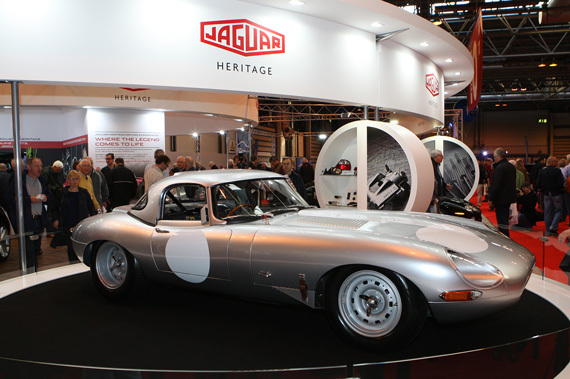
Lightweight E Type. In period Jaguar allocated 18 chassis numbers which were to be used for the lightweight racing version of the E Type. Only twelve numbers were used. Earlier this year Jaguar decided to build the final 6. All have now been sold, each for around £1 million.

Lister-Sunbeam. 7734KV was the first of three light weight Racing Sunbeam Tigers built and was raced in the 1964 Le Mans 24 hour race. The fastback Coupe body was built by Listers. The car was sold in 1965 and was campaigned at various UK race circuits during the 1960s.
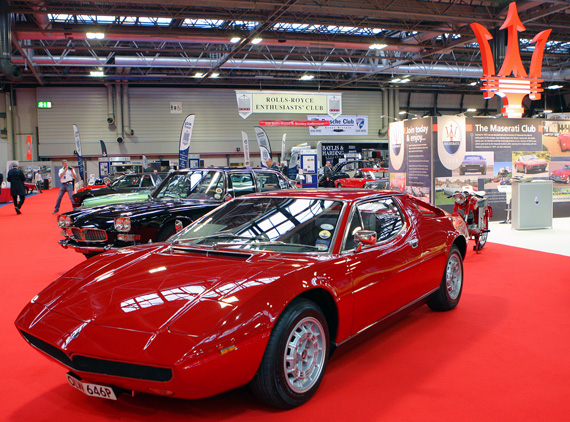
Maserati Merak. Built in 1975, Pete Stewart's 3.0 V6 Merak is not an SS model but one of 74 right hand drive pre SS models built.
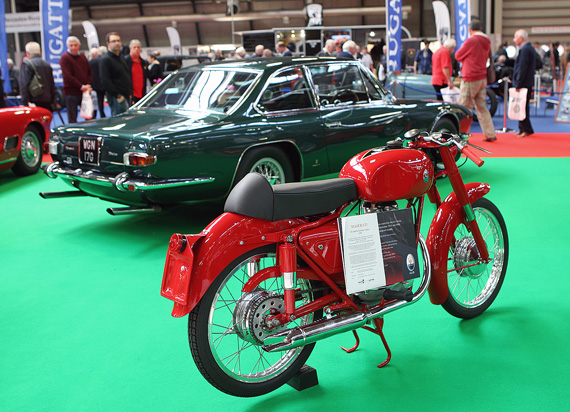
1955 Maserati TVpT4 motor cycle and Mexico. As you probably all know Adolfo Orsi purchased Maserati in 1937 from the Maserati brothers who at the time in addition to making racing cars also made spark plugs and machine tools. In 1938 he moved the company to Modena and the company began to also produce light bulbs and batteries. In 1947 Adolfo separated the car production side of the business and the parts side became Fabbrica Candele e Accumulatori (FCAM) Following financial issues FCAM was passed to Adolfo's sister Ida who noted that car ownership was only for the wealthy. Motor bike and scooter companies were springing up around the country and Ida decided to by Italmotor of Bologna. In 1954 she instructed the company designers to come up with a new range of motor cycles with a capacity of between 50 and 160cc's. FCAM closed in 1957. This model is a 160cc TV160T4 from 1955.
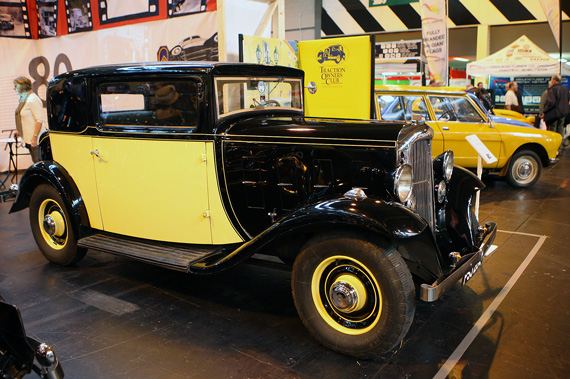
Citroen Rosalie. Produced between 1932 and 1938 in 8 and 10 CV (1452 and 1767cc) 4 cylinder, and 2650c 6 cylinder 15 CV versions. The Rosalie name was given to the range of cars by the French people. In the UK they were known as 10, 12 and 20 HP. The range was cut back in 1934 as Andre Citroen was concentrating on the front wheel drive Traction Avant model. Andre Citroen went bankrupt in December 1934 following which the Rosalie was relaunched with a restyled grill and the Traction Avant engine. This example is one of the first 8CVs produced in November 1932. The body is by SICAL (Societe Industrielle Carrosserie Automobile Levallois).

Fiat Uno-Turbo. Surely better than when it left the factory? Jeremy Nesbit's 1988 Fiat Uno Turbo MK1.
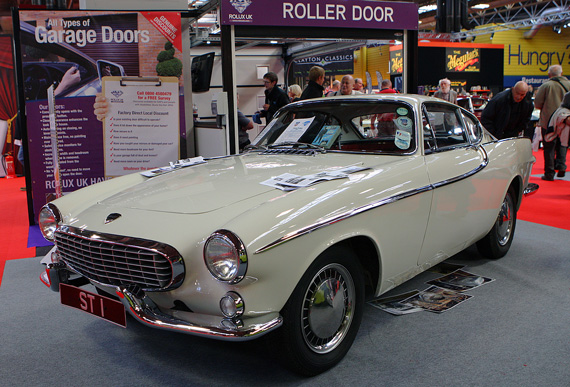
Growing up in the 1960s who can forget Simon Templar in his Volvo P1800 ST1. The number plate ST1 was only used for filming. The registration of the car was actually 71DXC. This is the car. 71DXC appeared in opening sequences of the first ever episode 'The Talented Husband' and was used in many of the 26 episodes of the first series. This being a 1962 example construction was carried out by Jensen Motors in West Bromwich rather than in Sweden. The car even has its own web site www.thesaintvolvo.co.uk
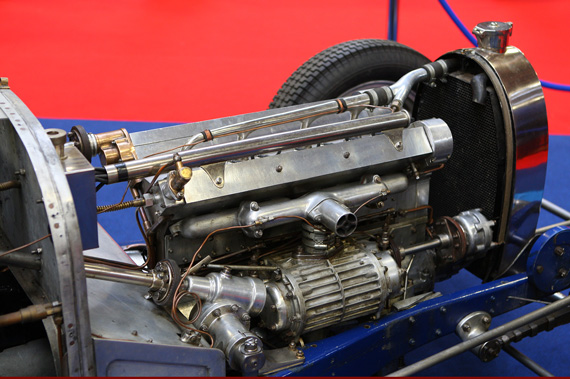
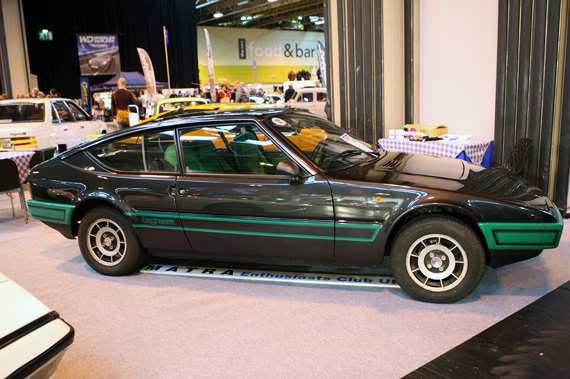
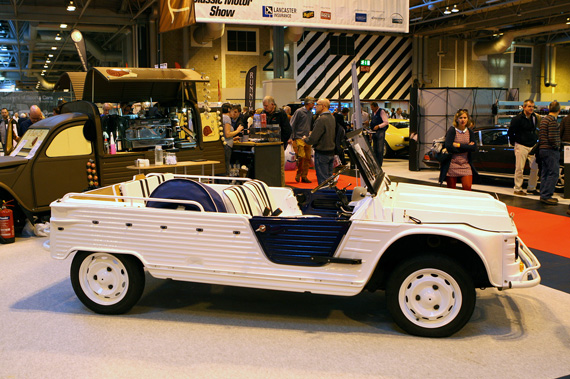

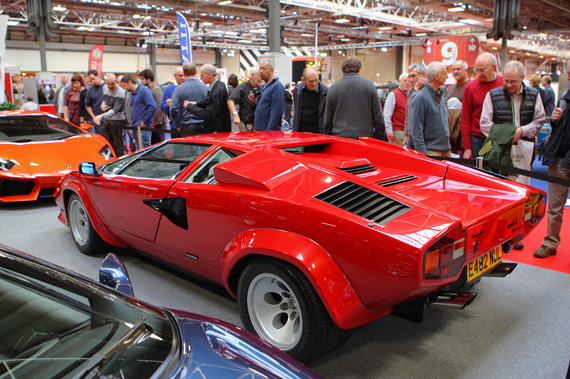
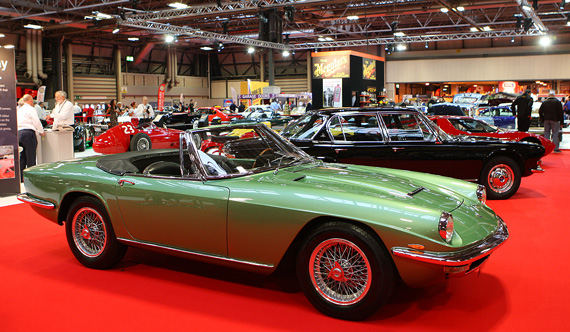
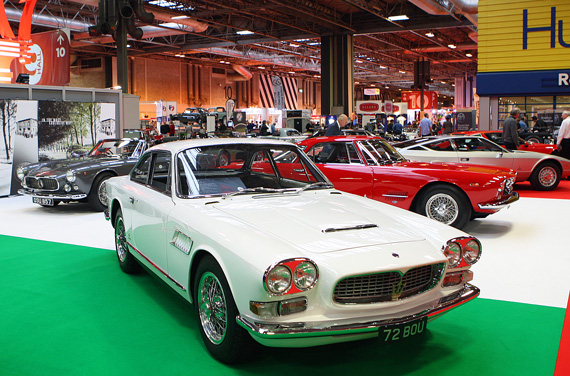
Re: Picture #6.
The light metallic green Alfa Romeo in the background is a 2000 Berlina, not a 1750, as the Headlights / Spotlights are the same size and the heart-shaped grill is wider than the 1750’s narrower grill.
The dark grey Ferrari SWB, registration SWB 250, is serial no. 2243 GT, ex-David Seielstad.
In the name FCAM (Fabbrica di Candele e Accumulatori Maserati), I believe that “candele” refers to spark plugs, rather than light bulbs.